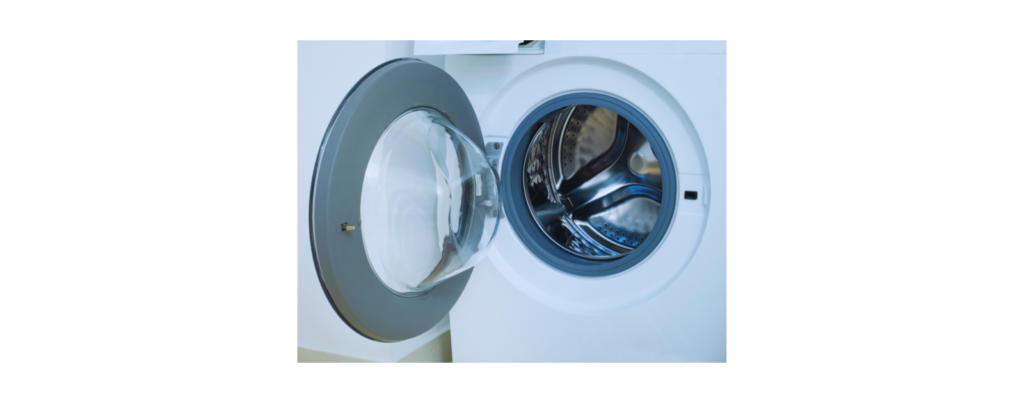Keeping your washing machine clean is essential for maintaining fresh-smelling laundry and prolonging the life of your appliance. It’s easy to overlook, but giving your washer a little TLC ensures your clothes come out spotless and extends its lifespan. Let’s dive into a friendly, step-by-step guide to keep your washer running like a dream!
Why Cleaning Your Washing Machine Matters
A washing machine is one of the hardest-working appliances in your home, but it’s often neglected. Over time, soap scum, leftover detergent, fabric softener, and even mineral deposits can build up. These deposits not only make your washer work harder but can also lead to odors, bacteria, and mold growth. Keeping your washing machine clean ensures your clothes come out fresh and that your appliance performs efficiently.
Here’s a relatable example: Have you ever noticed your freshly washed clothes still smell musty or aren’t as clean as you’d like? That’s often a sign your washer needs attention. A clean machine equals cleaner clothes and a happier laundry day.
Simple Steps to Clean Your Washing Machine
Step 1: Gather Your Supplies
No need to buy special products. All you need are household staples like:
- Distilled white vinegar
- Baking soda
- Chlorine bleach (optional)
- A microfiber cloth
- An old toothbrush for scrubbing
These items are affordable, effective, and safe for your appliance.
Step 2: Empty the Washer
Always start with an empty washer. Remove any clothing or laundry products from the drum and dispensers. If there’s leftover detergent or fabric softener in the dispensers, rinse them out with warm water.
Step 3: Run a Hot Cycle with Vinegar
Pour two cups of distilled white vinegar directly into the washer drum. Select the hottest water setting and start a complete cycle. The vinegar helps break down soap scum, kill bacteria, and dissolve any musty odors lingering in your washer.
Step 4: Add Baking Soda
After the vinegar cycle, sprinkle half a cup of baking soda directly into the drum. Run another hot cycle. Baking soda acts as a natural deodorizer, neutralizing odors and ensuring a fresh finish.
Step 5: Wipe Down Surfaces
Once the cycles are complete, grab a damp microfiber cloth. Wipe the washer drum, inside the door, and around the fabric softener and detergent dispensers. Pay extra attention to the rubber seal and door gasket on front-loading machines—these areas are notorious for trapping moisture and developing mold.
Step 6: Clean the Dispensers
Remove the detergent and fabric softener dispensers, if possible. Soak them in warm water mixed with a splash of vinegar. Use a toothbrush to scrub away any residue or buildup. Rinse thoroughly and reattach them to your washer.
Step 7: Clean the Exterior
Don’t forget the outside! Wipe the washer’s lid or door, buttons, and exterior with a damp cloth to remove dust and grime. A clean exterior complements your sparkling interior.
Step 8: Air Dry
Leave the washer door open for a few hours to let the interior dry completely. This simple step prevents mold and mildew from forming in the damp drum.
Special Considerations for Front-Loaders and Top-Loaders
Front-Loaders

Front-loading washers are energy-efficient and gentle on clothes but require extra care:
- Door Gasket: Clean this rubber seal thoroughly to prevent mold and mildew.
- Leave the Door Open: After every wash, leave the door slightly ajar to promote airflow and reduce moisture buildup.
Top-Loaders

Top-loading washers are easier to clean but still benefit from regular maintenance:
- No Gasket to Worry About: Focus on the drum and dispensers.
- Deep Cleaning: Use the longest wash cycle with the hottest water setting to achieve a thorough clean.
Tips to Keep Your Washing Machine Fresh
- Use the Right Amount of Detergent: Overloading your washer with detergent can lead to residue buildup.
- Opt for HE Products: If you have a high-efficiency washer, stick to HE-labeled detergents and softeners.
- Monthly Maintenance: Run a hot cycle with vinegar at least once a month.
- Dry the Drum: Wipe down the drum and door gasket after every use to prevent moisture.
- Avoid Wet Clothes Sitting: Never leave wet laundry in the washer for long periods.
- Inspect Dispensers: Regularly check and clean the detergent and fabric softener dispensers.
How to Tackle Musty Smells and Mold
If your washer smells musty or you spot mold, follow these additional tips:
- Use Chlorine Bleach: Run a hot cycle with one cup of bleach to kill mold and bacteria.
- Scrub Hard-to-Reach Spots: Use an old toothbrush to clean the door gasket, dispensers, and other tight areas.
- Rinse Thoroughly: After using bleach, run an additional rinse cycle to ensure no residue remains.
- Let It Breathe: Always keep the door open between washes to allow for proper ventilation.
FAQs About Cleaning Washing Machines
Q: How often should I clean my washing machine?
A: Deep clean your washer once a month. Wipe down the drum and exterior after each use for best results.
Q: Can I use natural cleaners?
A: Absolutely! Vinegar and baking soda are excellent natural cleaners that are safe for your washer.
Q: Why does my washer smell bad?
A: Musty odors are caused by soap scum, detergent residue, and trapped moisture. Regular cleaning prevents this issue.
Q: Is it safe to use bleach?
A: Yes, but use it sparingly. Bleach is effective for mold and bacteria but should never be mixed with vinegar.
Q: How can I prevent future buildup?
A: Use the right amount of detergent, clean dispensers regularly, and keep the door open after each wash.
Q: Can I use commercial washing machine cleaners?
A: Yes, they are effective, but household items like vinegar and baking soda work just as well.
Cleaning your washing machine doesn’t have to be a chore. With these simple steps, tips, and tricks, you’ll keep your appliance running efficiently and your clothes smelling their freshest. Regular maintenance not only saves you money in the long run but also makes laundry day a whole lot more enjoyable. Happy cleaning!





